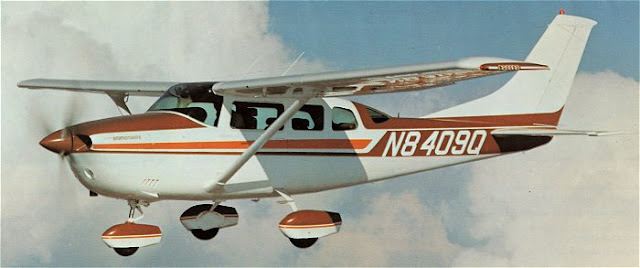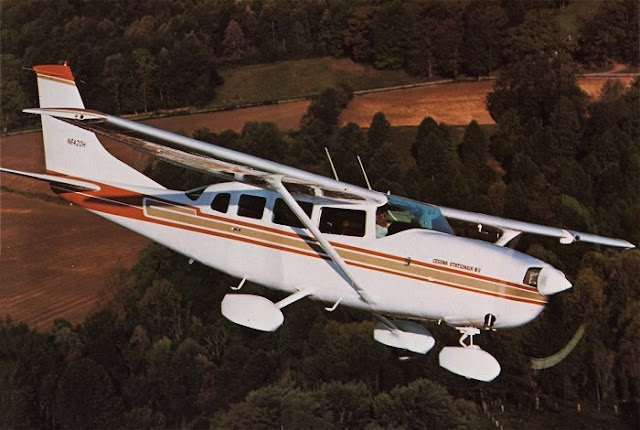If you ever have the chance to compare a 206 with a 172 side by side, you'll notice that the wing span of the 206 is significantly longer, however the gear on the 206 is not as wide as a 172. This makes for a very tippy airplane. I've saw one that got tipped over in 20 knot wind. You won't see that with a 207 because the landing gear is A LOT wider. Also, the 206 gear is a spring, whereas the 207 gear is tube (not sure if I described that right, but it makes a difference by reducing the bounce factor on hard landings).
Actually, the wingspan of the 172, 206 and 207 are all exactly the same (36'0" with strobes - absent the aftermarket wingtip fuel tank mod), but you're right about the MLG width.
Before the 1968 model year, all high-wing Cessnas had the flat, spring-steel MLG derived from Steve Wittman's original design. The C-177 Cardinal (1968) introduced the wider-track, tapered steel tube MLG that flexed fore and aft as well as up and down, and gave a better, more stable ground ride.
The C-207 (1969) was the second model to be produced with the tubular gear.
The tubular gear spread to the C-210 in 1970, C-150 and C-172 in 1971, and C-182 in 1972. For comparison, a C-172L with tubular gear has a 13" wider track than a 172K with spring gear. A spring-gear 206 has a main gear track of 8'1"; while the track of a tubular-gear 207 is an even ten feet.
Tubular MLG was never used on the C-180/185. The C-206 was the only tri-gear model that never got the tubular gear -- even the new C-206H still has the flat spring gear. I have heard that the necessary internal fittings for tubular gear would interfere with the double doors on the C-206.
Interestingly, the C-207 and the C-150 are the only strut-braced high-wing models that were never produced with the cuffed ("Camber-Lift") wing leading edge introduced on the rest of the line in the early 1970s. In the case of the 150, the cuffs performed badly in spin tests (13 turns to recover from a 2-turn spin); and as to the 207 the company felt the anticipated sales volume didn't warrant the R&D and flight test investment.
The 207 was also never factory-tested or approved for floats (which may have prompted Cessna to stick with the 206 for re-start production).
Former Cessna Manager of Flight Test & Aerodynamics William Thompson wrote of the C-207 (
Cessna - Wings for The World: The Single-Engine Development Story):
"The most-rearward limit of the center-of-gravity envelope is an amazing 42% of the mean aerodynamic chord (MAC). This value is believed to be the most-aft limit of any lightplane, and, of course, it is made possible by the extremely long tail arm."
Thompson observed that the long tail arm also made for better controllability, stability, trim, and transitional stick forces, compared to the C-206.



